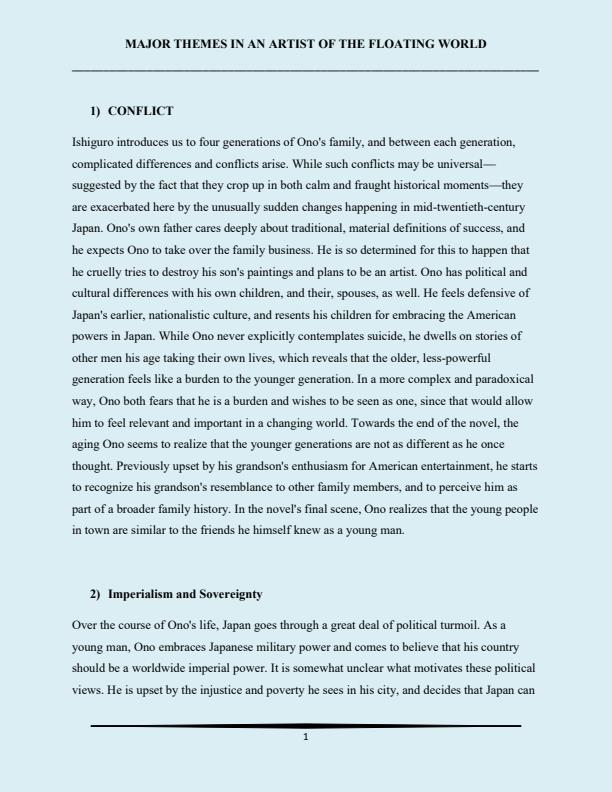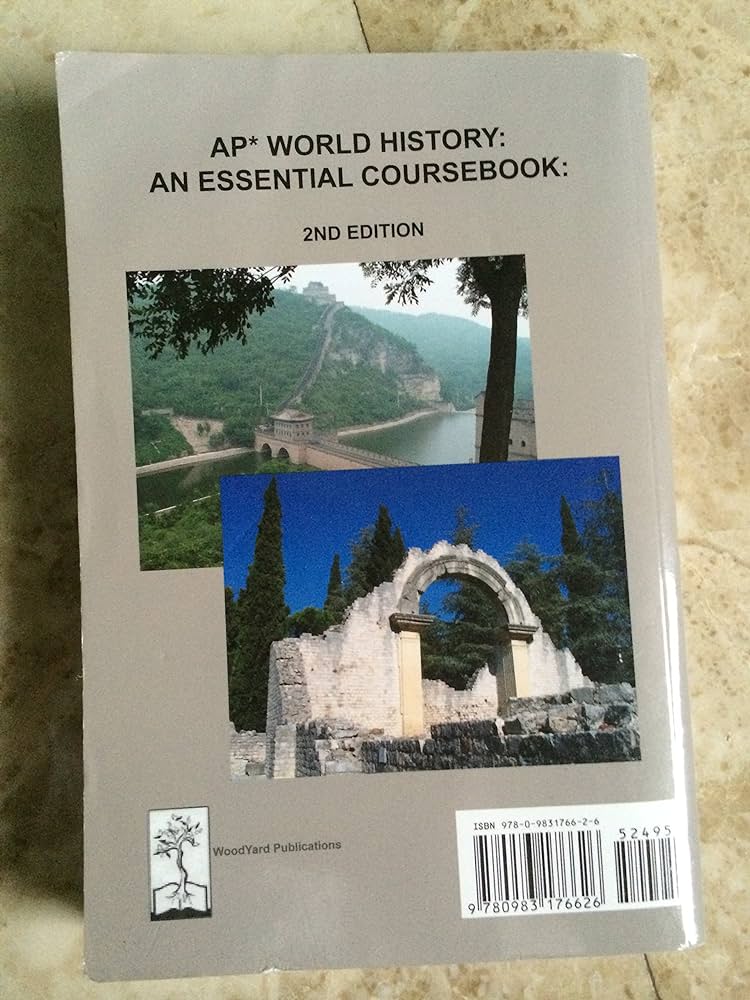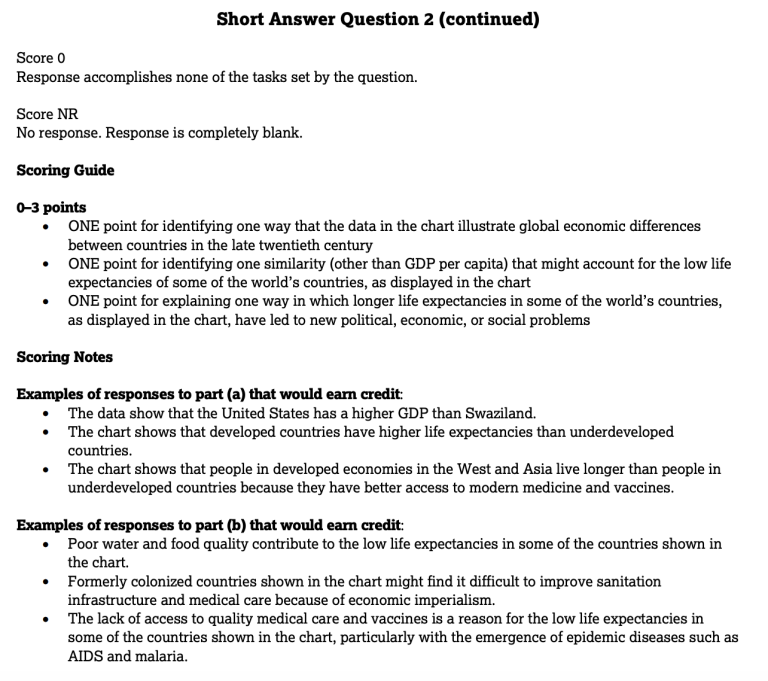Key Themes In An Artist Of The Floating World
An Artist of the Floating World is a novel by Nobel Prize-winning British author Kazuo Ishiguro. It is set in post-World War II Japan and follows the story of elderly artist Masuji Ono, who reflects on his life as he looks back on his past. Ishiguro uses many key themes throughout the novel, including memory, regret, self-deception, guilt, and the effects of war. These themes are explored through Ono’s personal experiences and the lives of the people around him, providing insight into the complexities of life in post-war Japan. Memory is a particularly important theme in the novel, as Ono’s memories of the past serve as a way to make sense of the present. Regret and self-deception are also explored as Ono comes to terms with his own actions and how they have shaped his life and the lives of those around him. Finally, the effects of war, both on the country and on individuals, are explored in the novel, as Ono reflects on the changes that have occurred since the war ended. These themes come together to provide a thought-provoking and deeply moving examination of life in post-war Japan.
Overview of “An Artist of the Floating World”
Written by Nobel Prize-winning author Kazuo Ishiguro, “An Artist of the Floating World” is a stunning and emotionally resonant novel about the aftermath of World War II, and the moral consequences of a nation’s choices. On the surface, the novel follows the story of Masuji Ono, an elderly Japanese artist whose past actions cast a long shadow on his present life. Yet Ishiguro’s work is much more than a simple story of redemption; rather, it speaks to a deeper, more universal theme: the struggle between redemption and retribution. By examining the themes of identity, memory, and guilt, Ishiguro offers a thought-provoking meditation on the moral implications of a nation’s past decisions.
The novel opens with the aging Masuji Ono reflecting on his life and his role in the war. In the aftermath of Japan’s defeat, Masuji is forced to confront the consequences of his actions and the choices he made during his youth. This internal struggle between redemption and retribution is a key theme throughout the novel. On one hand, Masuji seeks to redeem himself by reflecting on his past mistakes and attempting to make amends. On the other hand, he is haunted by a sense of guilt and is aware that his attempts at redemption may be too little, too late.
This theme of redemption and retribution is further explored in the novel through the character of Masuji’s daughter Noriko. As a young woman, Noriko is forced to reconcile her father’s past with her present life. Her struggle to make sense of her father’s actions speaks to the larger theme of the novel: the consequences of a nation’s choices, and the power of memory and identity to shape our understanding of the past.
Ultimately, “An Artist of the Floating World” offers a timely and thought-provoking exploration of the moral implications of a nation’s choices. Through its exploration of the themes of identity, memory, and guilt, the novel speaks to a deeper, more universal truth: the power of redemption and retribution to shape our lives. As Ishiguro’s novel brilliantly illustrates, the consequences of a nation’s choices can have a profound impact on our lives, and our understanding of the past.
Major Characters and their Personal Struggles
An Artist Of The Floating World, written by Nobel Prize–winning author Kazuo Ishiguro, is a powerful, thought-provoking novel about the struggles of a Japanese family during and after World War II. The novel focuses on the major characters’ personal issues and how they deal with the consequences of war. The characters, most notably the main character, Masuji Ono, struggle with guilt, shame, and their identity as Japanese citizens. The novel features a range of themes, including the effects of war on families, the internal struggles of individuals, and the effects of changing times on society.
The main character, Masuji Ono, is a retired painter who is struggling to come to terms with his past and his family’s legacy. He is haunted by his involvement in the war and his failure to protect his family. He is also haunted by his inability to reconcile his traditional values with the changing times, and his guilt over the destruction of the floating world. Masuji’s daughter, Noriko, is also struggling with her identity as a woman in the changing society. She is struggling to find her place in a society that is rapidly shifting and she is dealing with the tension between the old and the new.
Another major theme in the novel is the physical and emotional aftermath of war. The characters’ personal struggles are mirrored in the physical destruction of the floating world. The novel paints a vivid picture of the destruction of beautiful places and people’s lives. The characters must grapple with their own guilt and shame as they confront the physical destruction around them.
An Artist of the Floating World is a powerful and thought-provoking novel that examines the personal struggles of its characters and the effects of war and changing times on society. Through its characters’ experiences, the novel offers a nuanced and complex look at the themes of guilt, identity, and the aftermath of war.
Themes of Memory, Identity and Loss
in an Artist of the Floating World
An Artist of the Floating World, a novel by Nobel Prize-winning author Kazuo Ishiguro, is a story of nostalgia and regret. Set in post-war Japan, the novel follows the life of Masuji Ono, an elderly artist who looks back on his life with a sense of guilt and regret. The novel is full of themes of memory, identity and loss, which offer powerful insights into the human experience of life.
The novel’s main character, Masuji Ono, is a complex man who is constantly struggling to reconcile his past with the present. He is haunted by his memories of the past, and his identity is constantly in flux as he attempts to make sense of his life. He is also struggling with the loss of the things he once held dear, his wife, his son, and his career. These losses are a major theme of the novel, as they cause Ono to re-examine his identity and his place in the world.
Memory is another important theme in An Artist of the Floating World. Ono’s memories of his life in the past are a source of both comfort and sorrow. He remembers his wife and son, and his career, but also the mistakes he made and the people he hurt. Memory is a powerful force in the novel, as it shapes Ono’s identity and his understanding of himself.
The themes of memory, identity and loss in An Artist of the Floating World offer powerful insights into the human experience of life. Ono’s struggles to come to terms with his past and his present provide a poignant reminder of the power of memory and the importance of understanding one’s identity. The novel is a powerful and moving exploration of the complexities of life, and its themes of memory, identity and loss remain relevant today.

Japanese Post-War Society and its Effects on the Characters
An Artist of the Floating World, written by Nobel Prize-winning author Kazuo Ishiguro, is a story of memory, guilt, and identity set in a post-war Japan. The novel follows Masuji Ono, an elderly artist who is struggling to reconcile his past actions with his present identity. Ishiguro explores the themes of post-war society, guilt, and identity through a series of flashbacks that reveal the characters’ pasts and their inner conflicts.
The novel delves into the complexities of post-war Japan, a society that was slowly rebuilding itself while dealing with the aftermath of war. Through the flashbacks, the reader is exposed to the darkness of the war and the subsequent guilt of those who had been involved. Ishiguro also explores themes of identity and the struggle to define oneself in a society that is still coming to terms with its past. The characters in the novel are trying to understand who they are and how they fit into their new world.
Ishiguro’s novel provides an insightful look at post-war Japan and its effects on the characters. Through his exploration of the themes of post-war society, guilt, and identity, Ishiguro creates a complex and nuanced story that speaks to the struggles of a post-war society.
The Role of Art in the Novel
An Artist of the Floating World is a book by Nobel Prize-winning author Kazuo Ishiguro that takes a look at the role of art in post-war Japan. Art plays a major role in Ishiguro’s novel, both as a source of solace for the protagonist, Ono Masuji, and as a reflection of the society he inhabits. The novel examines the tension between art and politics, and the way art can be used to manipulate and express power. It also looks at how art can be used to create a sense of identity, and how it can be a source of comfort for those who have suffered great losses. The novel’s exploration of the role of art in a post-war society is one of its most powerful themes and provides readers with a unique insight into the complexities of the human experience.
The Importance of Choice and Consequence
in An Artist Of The Floating World
Kazuo Ishiguro’s novel, An Artist Of The Floating World, is a story of deep emotional resonance as it explores the consequences of choices made in a changing society. The novel follows Masuji Ono, a retired artist living in post-World War II Japan, and his attempts to come to terms with his past actions and decisions. In the novel, Ishiguro examines how choices and consequences are intertwined, and how the past can affect one’s present and future.
Throughout the novel, Ishiguro presents characters who are struggling to come to terms with their decisions in life. Masuji Ono, for example, is constantly haunted by his former actions in the war and his failed relationships. By presenting these characters, Ishiguro shows how decisions we make can have lasting effects and how our past can shape our present.
The novel also contains themes of cultural change and how it can affect individuals. As Japan goes through a period of modernisation, Masuji is forced to confront the traditional values he holds dear. Through Masuji’s story, Ishiguro demonstrates how the choices we make can often be affected by the changing society around us.
An Artist Of The Floating World is a powerful novel which highlights the importance of choice and consequence. By exploring the connections between decisions and their consequences, Ishiguro presents a thought-provoking story of one man’s struggle to come to terms with his past. By examining the impacts of cultural change and the weight of decisions, the novel offers a compelling insight into an individual’s life and the consequences of choices.
FAQs About the Key Themes In An Artist Of The Floating World
1. What are the main themes in An Artist of the Floating World?
The main themes of An Artist of the Floating World include the struggle between tradition and modernity, the importance of family, and the consequences of one’s actions.
2. What genre is An Artist of the Floating World?
An Artist of the Floating World is a novel written in the style of Magical Realism.
3. What is the time frame of An Artist of the Floating World?
An Artist of the Floating World is set in the 1940s and 1950s in Japan, a period known as the Taishō period.
Conclusion
In An Artist of the Floating World, author Kazuo Ishiguro presents a complex and nuanced exploration of the themes of aging, regret, nostalgia, and moral responsibility. Set in post-war Japan, the novel follows the life of Masuji Ono, a man who struggles to come to terms with his own sense of guilt and responsibility for his actions during the war. Through Ono’s story, Ishiguro reveals how the past can haunt us and how, ultimately, we must confront our own moral choices in order to move forward. The novel is a powerful reminder of the importance of personal accountability and the consequences of our actions.






